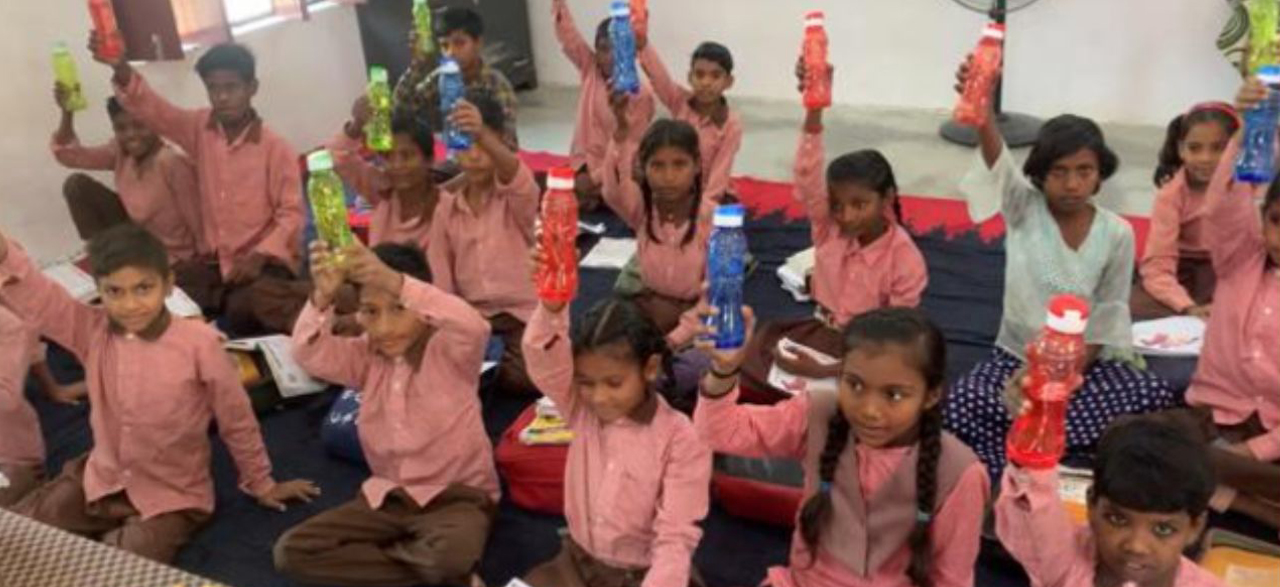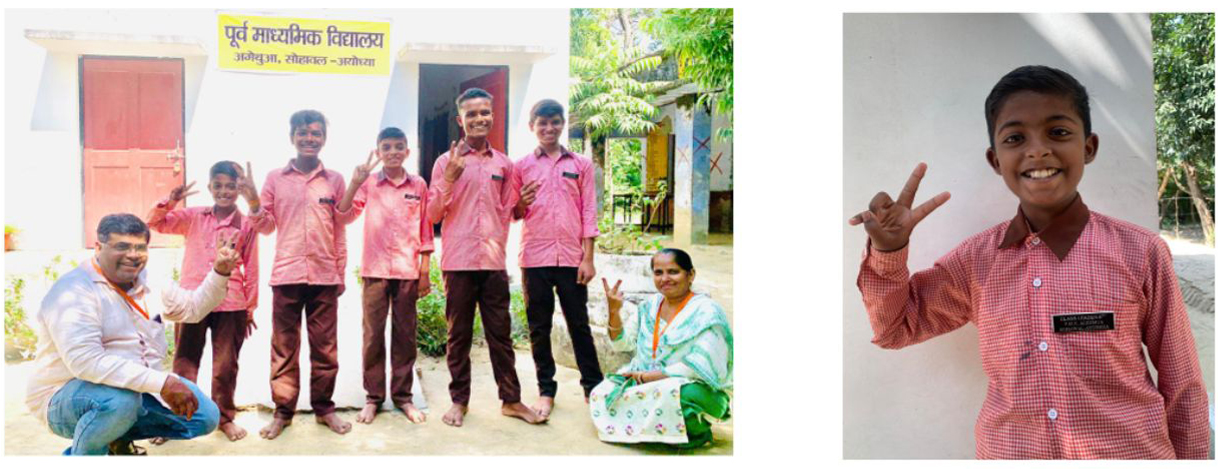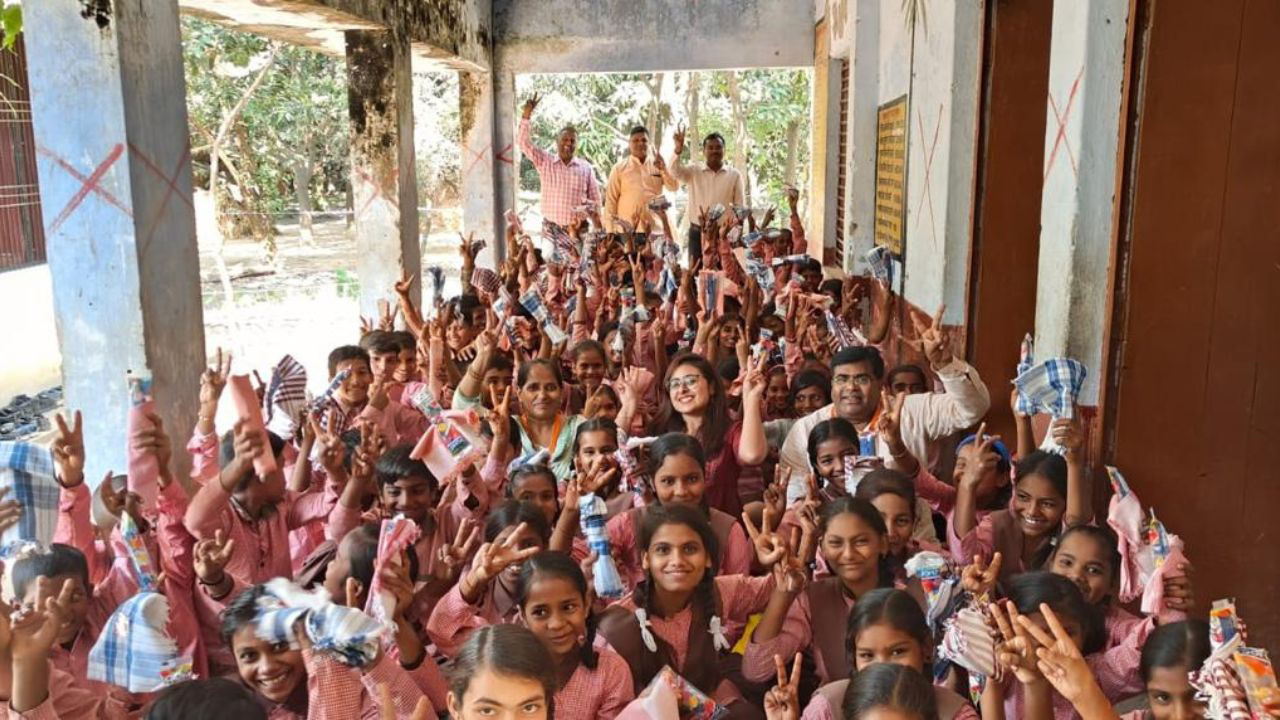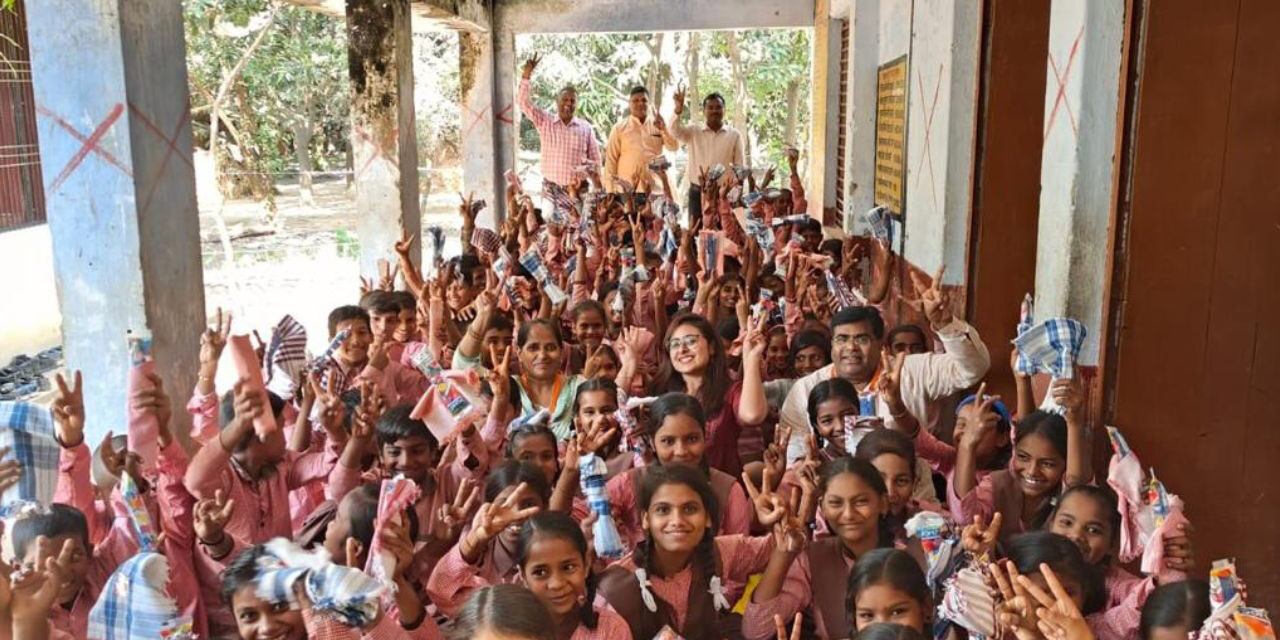FROM ABANDONED TO ACCLAIMED: THE REMARKABLE JOURNEY OF AGETHUA SCHOOL
(BLOCK- SOHAWAL, DISTRICT- AYODHAYA)
The problem of low attendance and weak parental engagement
Schools, however good, fail to fulfil their purpose if students don’t come. In Ayodhya, the Government Primary School of Agethua (Block Sohawal, District Ayodhya) was a stark reminder of this reality. By May 2017, attendance had dropped below 20%, and the school was on the brink of closure. Empty classrooms and silent corridors reflected not just the crisis of one institution but a larger challenge in the public education system.
Low attendance in government schools is a widespread concern across India, particularly in rural areas. Research has shown that absenteeism often results from multiple, interconnected factors, such as a lack of parental engagement in children’s education, inadequate awareness of the long-term value of schooling, and poor infrastructure that makes schools appear uninviting or irrelevant. Parents, especially in low-income rural households, may prioritise children’s participation in agricultural or household labour over consistent school attendance. This leads to a cycle where low parental involvement contributes to poor attendance, which in turn erodes the quality of learning and trust in the schooling system.
The situation in Agethua was no different. With parents disengaged, children irregular, and the school environment neglected, the institution risked losing its relevance in the community. It highlighted the pressing need for leadership that could not only improve infrastructure but also rebuild trust between school and community, and reframe education as a meaningful pursuit for every child.
“Now students only miss school when they are sick or there is any unavoidable urgency at home, so our school’s student attendance remains 90%+. Another best practice of our HM is that he believes in appreciation structures, like he appreciates the students every year who have maintained 100% attendance throughout the year.”
Kahkashan Bano, Teacher
A New Beginning: Leadership that Listened
When Mohammad Khaleeq Ali Khan became Headmaster, he made student outreach his first task. He visited the fields, sometimes sitting in the mud, and spoke with children and their parents. His hands-on work set an example and encouraged teachers and students to join.

Teachers began taking ownership of attendance. They tracked students in class registers, monitored absence patterns, made regular calls, and visited homes when children stayed away. Class presidents were given responsibility for their classmates’ attendance; they visited the homes of absent classmates and reported back. Students also helped manage registers and mid-day meal checks. Parents grew more cautious about school time and started asking for half-day leave instead of keeping children home for the whole day.
Khan focused on making the school a welcoming environment. He made the first months rich in games and play, brought sports equipment, and organised activities that made children want to come and stay. This helped change the school’s image from a workplace to a place of play and learning.
He explains his approach plainly: “Bachon ko school mein laane ke liye madaari banna padta hai. A teacher should know how to hypnotise students first, then teach.” Khan told teachers to win students’ trust and respect before pressing academics.
He also changed teacher practice. Before he arrived, teachers worked alone and lacked shared goals. Khan gave teachers clear roles, delegated responsibilities, and treated them as leaders of their subjects, almost like CEOs. He listened to their problems, asked about their well-being, and worked to remove obstacles they faced. This helped build trust and improve cooperation among staff.
Combined, these steps of home outreach, student leadership, family engagement, play-based activities, and teacher empowerment created a routine of regular attendance and a sense of shared responsibility for every child’s learning.
“I manage my Class 7 as President and make sure my classmates are regular. If someone is absent, I visit their home to find out why and encourage them to come back.”
Surjeet, Student President, Class 7, Government Primary School Agethua (Ayodhya)
From 20% to 100% Attendance
“Students of my school just love coming to school. Our HM is very caring; if any student falls sick, he takes them to the medical or parents’ home. If a student is being absent continuously, then he goes home to inquire about the reason”.
Preeti, Student President, Class 8th
All their efforts produced measurable results. Within three months, student attendance rose from less than 20% to 100%, a milestone in the school’s history. Children who earlier spent their days working in the fields alongside their parents began attending school regularly. In some cases, even when parents insisted on sending children to the fields, the children chose to come to school, sometimes without informing their families. The school gradually became a preferred space for students, even during peak agricultural seasons, such as harvest time.
Headmaster Khan’s work extended beyond Agethua. He reached out to nearby villages, encouraging more children to enroll. Importantly, he also brought back adolescent girls, some aged 16–18, who had dropped out under family pressure for marriage. He created an environment where these older students could return without hesitation, even though they were placed in classrooms with younger children. This inclusive approach ensured that the school not only achieved high attendance, averaging around 90%, but also sustained it over time.
Attendance was not treated as a numbers exercise alone. The focus was on building a school culture where students felt safe, respected, and responsible. Belonging and participation became central, giving students and teachers a shared stake in the institution’s progress.

Impact Beyond the School Walls
But Khan’s efforts didn’t stop there. Principal Khan believed in giving students a voice. He is a 21st-century enthusiast. Through proper elections, he appoints a president in each class starting from 3rd grade and assigns them specific roles and responsibilities in class and school management. The student presidents are selected based on various values, not just academic performance. The body of these presidents takes care of the students’ attendance, absenteeism, data registers, and mid-day meals. Students feel a sense of responsibility toward the roles assigned to them. This elected body of student presidents/leaders keeps track of attendance. They visit the parents of absent students to motivate them to send their children to school. They report to the head teacher about the cases where they aren’t able to do anything, then they make a strategy with the school head regarding those absent students. Under Khan’s leadership, Teachers and students took ownership of their roles, forging bonds of mutual respect and trust. Student leaders emerged, not chosen for their academic prowess alone, but for their values and dedication to the school community. Their voices echoed with newfound confidence as they actively participated in the governance and management of the school.
“Since this HM joined, he has enhanced and revamped the quality of the school. You can’t find a better school than this in the entire area.”
Baijnath (Bindu), Community Member, Agethua
Headmaster Khan’s ethos of compassion and inclusivity impacted every aspect of school life. From personalized admission kits to heartfelt tokens of appreciation, he nurtured a culture of belonging and pride. He and his staff contribute to making an admission kit for each student at the beginning of the year. The admission kit includes a pen, a water bottle, a pack of paint colors, a pack of colored sketch pens, a geometry box, and a paper board. He believes this helps in enrollment and makes students feel excited about coming to school in the new session.
A Model of Grit and Hope
With each passing day, the school blossomed into a sanctuary of learning and growth. Agethua School emerged as a shining example of what dedication and passion could achieve. Headmaster Khan, with his infectious zeal and unwavering commitment, had not only transformed a neglected institution but also ignited a spark of hope that boomed far beyond the confines of the village. Students from the nearby three other villages also started coming to his school.
In the words of Headmaster Khan himself, “Create such an environment in school that students don’t feel scared, but feel at home, where they can gain the confidence to thrive in life”. Indeed, under his guidance, Agethua School had become just that—a home where dreams took flight and futures were shaped 🙂
Principal Khan had a vision for his school: a place where students felt at home, where they learned not just from books but from life itself. And with his passion and determination, he turned that vision into reality.



